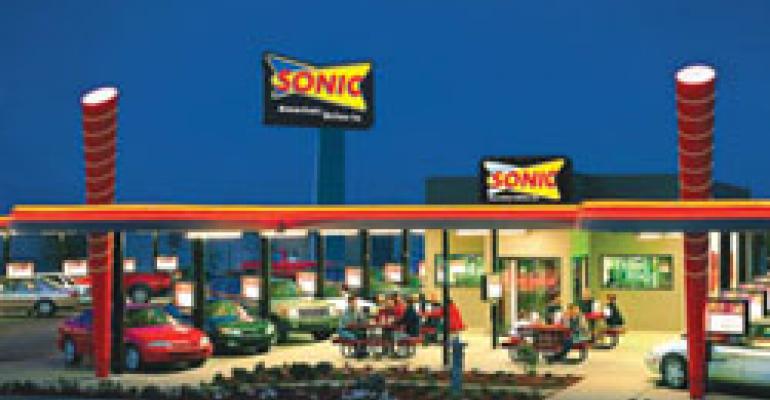The carhops rolling up to customers’ car windows at company-owned Sonic Drive-Ins are working harder to win tips. In an unconventional move for a quick-service restaurant chain, parent Sonic Corp. last year shifted the classification of its carhops from hourly wage earners to tipped employees who receive a lower cash wage with the difference being made up in tips.
Analysts note that the move should help the chain control labor costs, which continue to rise in the industry. But Sonic officials also see it as a way to improve service and encourage repeat customer visits.
“Our objective with the tip wage is not necessarily to drive our labor percentage cost down, but it allows us to afford to actually take our service levels up,” says president Scott McLain.
The federal government defines a tipped employee as any worker who regularly receives more than $30 a month in tips. Tipped employees earn a cash wage of $2.13 per hour, versus the federal minimum wage of $6.55 an hour. If the amount of tips does not bring the wage of a tipped employee up to $6.55 an hour, the employer must pay the difference.
More than 30 states have a higher cash wage for tipped employees than the federal level, and Sonic’s new initiative does not apply in the seven states that do not allow a tip credit.
Sonic began phasing in the new wage rate last summer. Since July, all new carhops are being hired at the lower cash wage of $2.13, or more in states with a higher rate. Existing carhops are being grandfathered into the program. They keep their current rate of pay, but are not bumped up as the minimum wage, either federal or state, increases. The federal minimum wage will rise to $7.24 an hour in July. Sonic has more than 3,500 restaurants in 38 states. About 20 percent are franchised.
Sonic officials declined to discuss how much money the tip credit initiative is saving, but stressed to analysts the goal of the program is to improve service by reinvesting those dollars back into the business.
“The primary motivation for us in doing this is being able to have more carhops and to have the carhops we do have serve our customers better,” McLain has told analysts. “We believe that our sales and profits will benefit more from better and faster and friendlier service than they will from just trying to squeeze our margins.”
The jury is still out on whether this approach will work for a quick-service chain, some analysts say.
One reason consumers have been trading down from full-service restaurants to quick-service ones is because they do not have to add a tip to their check, cautions Steve West, vice president of the restaurant division of Stifel Nicolaus & Co. in St. Louis.
“It’s a novel idea, and [Sonic] is good for coming up with it and trying it,” West says. “But I think there has to be some kind of education for the consumers at some point that these guys work for tips. If these kids taking these carhop positions are not making as much as the person is making at McDonald’s doing a similar type job, they are going to go somewhere else.”





